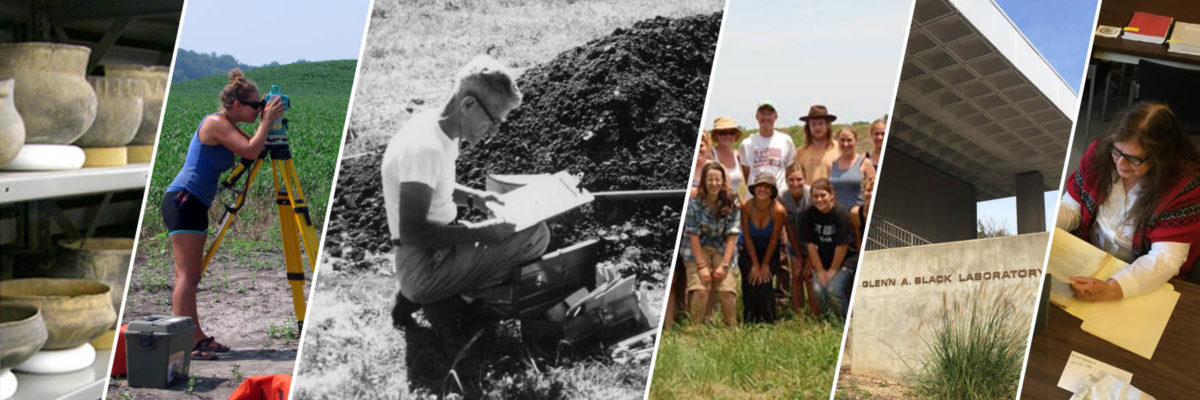by Anne Hittson
Hello! My name is Anne and I have been a collections assistant on the rehousing of Angel Mounds since June 2019.

I graduated with a BFA in Sculpture from Rhode Island School of Design in June 2018. My studio practice and academic study explores the interrelations of objects—ancient and contemporary, and language—written, spoken, and visual. I believe the study of visual communication of and through art and artifacts offer an incredible understanding of human development and culture. I have always asked: “What can these objects tell us?” for the making of objects communicate so differently than spoken or written language.
I am studying to be a Speech Pathologist. I wish to further explore and understand the different layers of how spoken and written language operates in our brain, the developmental stages we go through in exercising it, and what happens in our brain when we do not exercise it. I am excited to learn about the plasticity of our brain, because it is, figuratively and literally, one of the most flexible and softest organs in the body.
While working on the rehousing of Angel Mounds project, I have grown accustomed to handling and learning about faunal bones, and have been most interested in one of the densest bones in the body, which is so near to the soft brain that it is almost poetic: the petrous temporal bone of the white-tailed deer.

The petrous temporal bone is wedge-shaped and roughly has a diameter of a quarter. It is technically a part of the temporal bone which is situated on either side of the skull that houses the structure that forms the middle and inner ear.
As a visual artist, I was drawn to its organically odd shape and my ignorance of understanding its anatomy. There are shallow depressions that spiral into deep cavities, small pockets of air that appear delicately thin, but the bone is indeed incredibly hard. Each one I come across is slightly different in length, width and texture of surface – some are ribbed, while others appear smooth and polished. I deeply appreciated learning of the delicate labyrinth that this small bone held within it.
Within the petrous part, sound waves are transmitted from air to the fluid-filled cochlea or inner ear. Quite generally, they do so as vibrations through canals, cavities and along auditory nerves in the brain that all work harmoniously to activate our registry of sound.

Furthermore, it is the density of the petrous bone that makes itself unique to scientists and researchers in DNA studies. Compared to other bones, DNA of the petrous bone is not easily degradable through soil and wear and because of the prolonged decay of bone induced by its density, it is one of the most widely used sites to study DNA.
I regularly come across petrous bones while working on the rehousing of Angel Mounds. It is oddly satisfying to spot them with their peculiar shapes and textures and with so many found at the site of excavation, it is exciting to think of the possibility of using them for DNA research. If conducted, this research could tell us more than what we can see with our eyes and would be an enormous and exciting investigation of faunal life at Angel Mounds.

